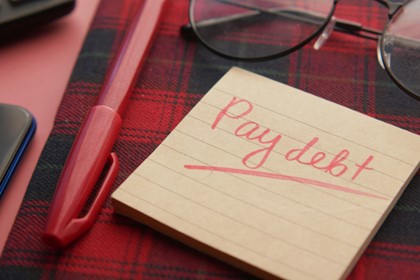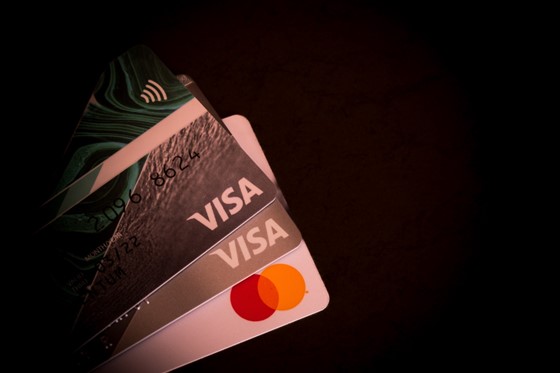What’s the Best Way to Pay Down Credit Card Debt ASAP?
March 25, 2024
One of the most important steps on the path to financial freedom is to pay down your credit card debt. As of the third quarter of 2023, the total debt owed by consumers in the United States amounted to $17.1 trillion[1]. Left unchecked, debt can wreak havoc on your resources. We’re committed to helping you create a brighter future.
In this guide, we'll explore the most effective strategies for tackling credit card debt and taking control of your finances. You’ll also find answers to some of the most common debt-related questions.
Why Do You Need to Pay Off Credit Card Debt?
Credit card debt can weigh heavily on your financial health. High interest rates and revolving balances can lead to a cycle of debt that's hard to break free from. By paying off credit card debt, you reduce financial stress.

You also free up funds for:
- Savings
- Wealth-building
- Achieving your financial goals
Moreover, reducing your debt-to-income ratio by paying off credit card debt can improve your credit score[2]. In the long run, a great credit score can transform your life. A high credit score leads to better loan terms, lower interest rates, and improved financial stability.
Recommended: What Are The 5 Factors That Affect Your Credit Score?
What Are the 3 Biggest Strategies for Paying Off Credit Card Debt?
When it comes to paying down credit card debt, there are several approaches you can take. The three most effective strategies are the snowball method, debt avalanche, and debt consolidation.

Explore each tactic and choose the one that will work best in your situation.
Recommended: How Does Credit Utilization Affect Your Credit Score?
1. The Snowball Method
The snowball method of debt repayment involves paying off your smallest debts first, then making minimum payments on larger debts until all of them are paid off.
By focusing on clearing smaller debts early on, you build momentum and motivation to tackle the larger debts. It's like dropping a small snowball at the top of the hill and watching it grow as it rolls downhill. This method tends to gain speed and size along the way.
For instance, imagine you have three credit cards with varying balances.
With the snowball method, you would prioritize paying off the credit card with the smallest balance first while making minimum payments on the others. Once the smallest balance is paid off, you move on to the next smallest balance, and so on. Soon, all debts are cleared.
Recommended: What is a Good Credit Mix? An Easy-to-Understand Guide
2. Debt Avalanche
The debt avalanche method prioritizes paying off debts with the highest interest rates first. By tackling high-interest debts early, you can minimize the interest you pay over time. Ultimately, you accelerate your debt repayment journey by saving money.
This method involves listing your debts in order of interest rates, with the highest interest rate debt at the top of the list. You then allocate extra funds toward paying off the debt with the highest interest rate while making minimum payments on the others.
Once the highest-interest debt is paid off, you move on to the debt with the next highest interest rate. This process continues until all of your debts are repaid.
While the debt avalanche method may not provide the immediate gratification of seeing debts cleared quickly, it can save you money. When executed effectively, this strategy reduces the total interest paid over the life of your debts.
Recommended: Should I Pay Off Debt or Save for Retirement?
3. Debt Consolidation
Debt consolidation involves combining multiple debts into a single, more manageable loan. This helps when the new loan has a lower interest rate. Consolidation can streamline your payments and potentially save you money on interest. Overall, this is supposed to make it easier to pay down your debt faster.
There are several ways to consolidate debt, including taking out a personal loan or transferring balances to a credit card with a lower interest rate.
By consolidating your debts, you simplify your repayment process. You may also be able to secure a lower interest rate, reducing the overall cost of your debt.
Recommended: Financial Goals for Your 30s Both Short and Long-Term
The Credit Card Debt Loophole
It's human nature to find the easy way out of any entanglement. The "credit card debt loophole" refers to certain strategies people use to minimize or eliminate credit card debt.
Common methods that fall under this umbrella include:
- Transferring debt to cards with low or 0% interest rates for a promotional period.
- Negotiating with creditors to settle debts for less than the full amount owed.
- Leveraging the fact that debt becomes unenforceable after a certain time frame. Keep in mind that this varies by state and debt type.
- Leveraging legal processes that provide relief from overwhelming debt. In many cases, this can have serious long-term consequences.
Approach these methods cautiously, as they often come with drawbacks or repercussions. Seek guidance from a financial advisor or credit counselor before pursuing any debt relief strategy.
Recommended: Free Credit Online Course at Centier To You
Take Control of Your Debt for a Brighter Financial Future
Taking control of your credit card debt is a crucial step toward achieving financial freedom. By employing one of these strategies, you can take charge of your money and your life.
As you embark on your journey to pay down credit card debt, small steps can lead to significant progress. Whether you choose the snowball method, debt avalanche method, debt consolidation, or a combination of strategies, stay focused on your goals. And, be sure to celebrate each milestone along the way.
Ready to take the first step toward paying down your credit card debt? Explore Centier Bank's range of credit card options and financial resources to support your journey to financial freedom.
Frequently Asked Questions
What is the fastest way to pay off credit card debt?
The fastest way to pay off credit card debt depends on your financial situation and priorities. The snowball method and debt avalanche method are popular strategies for accelerating debt repayment. However, you need to choose the approach that best aligns with your goals.
How long will it take to pay off a specific amount of credit card debt?
The time it takes to pay off credit card debt depends on factors like the total amount owed, the interest rates on your debts, and your monthly payment amounts. You can use online calculators or financial planning tools to estimate your repayment timeline based on your circumstances.
Is a certain amount of credit card debt considered excessive?
While there's no one-size-fits-all answer to this question, you should look at your debt-to-income ratio and overall financial situation. This will help you determine whether your credit card debt is manageable. As a rule, aim for a debt-to-income ratio of 36% or lower, including your mortgage and credit card debt.
How can I pay off credit card debt when facing financial challenges?
If you face a job loss or unexpected expenses, reach out to your creditors for help. Many creditors offer hardship programs or payment plans to help borrowers during difficult times. Additionally, consider seeking advice from a certified financial counselor.
Sources:
[1] https://www.experian.com/blogs/ask-experian/research/consumer-debt-study/
[2] https://www.experian.com/blogs/ask-experian/credit-education/debt-to-income-ratio/



